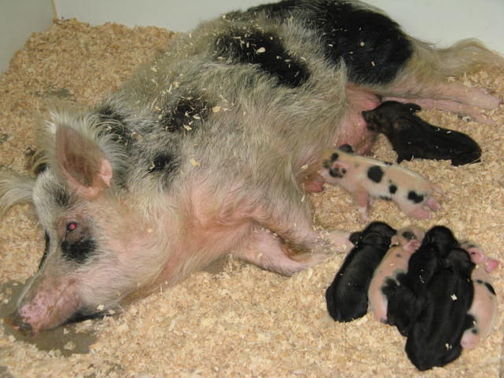Xenotransplantation was attempted unsuccessfully in the early 1900s. Several key research developments over the last 100 years now mean that the first xenotransplant treatments could be available soon.
What is xenotransplantation?
Xenotransplantation is when living animal cells, tissues or organs are transplanted from one species to another. Doctors first tried to transplant animal organs into humans over 100 years ago. Find out more about the history of xenotransplantation in this timeline.
The first xenotransplants
In the early 1900s, doctors attempted to replace failing human organs with organs from animals such as pigs, goats, lambs or monkeys. All of these xenotransplants failed, and any further attempts were abandoned until scientists had discovered why the transplants were failing.
Transplant rejection and the immune system
In 1944, Peter Medawar discovered that transplanted tissue or organs elicit an immune response in the recipient. Usually, the immune response protects us from disease-causing pathogens, such as viruses and bacteria. In transplant recipients, the immune system recognises donor tissues as foreign and attacks them, causing transplant rejection and transplant failure.
There are three types of transplant rejection:
- Hyperacute rejection – occurs rapidly, often before the surgery is complete, as pre-existing antibodies from the immune system react with the donor tissue.
- Acute rejection – occurs in first weeks or months after surgery as an immune system response develops.
- Chronic rejection – occurs gradually over several years after surgery.
Human to human transplants
Joseph Murray performed the first successful human to human transplant in 1954 when he transplanted a kidney between identical twin brothers. Because the twins were genetically identical, the recipient’s immune system did not need to be suppressed to prevent rejection. However, successful transplants between non-identical donors and xenotransplants were still not possible until scientists had developed ways to prevent rejection.
Suppressing the immune system
The first immunosuppressive drugs were identified in the early 1960s. These drugs were key to the first successful human to human pancreas, liver and heart transplants. However, transplants were not commonly used until the 1980s, when improved surgical techniques and immunosuppressive drug regimes resulted in better patient outcomes.
Doctors began investigating whether immunosuppressive drugs could be used to prevent rejection of xenotransplants. In 1963, Dr Thomas Starzl transplanted kidneys from baboons into six human recipients in Denver, US. The patients survived between 19–98 days.
Over the following decades, animal to human organ transplants were attempted, but success rates were low compared to human to human transplants, even with immunosuppression. Since the mid 1990s, researchers have been investigating whether genetically modifying the donor animals may prevent organ rejection.
Find out more in the article Xenotransplantation.
Choosing the donor species
Non-human primates, such as chimpanzees and baboons, were originally used as xenotransplant donors, but concerns about spread of infectious disease and ethical issues have now stopped their use. Most researchers are now using pigs as donors because:
- they are easy to breed and have large litters
- pathogen-free pig breeds are available
- pig organs are a similar size to human organs
- risk of infectious diseases is lower than in non-human primates
- pigs are already killed for food, so using pigs may raise fewer ethical concerns than non-human primates.
Worldwide ban on xenotransplants
All xenotransplantation was banned worldwide in 1997 because of concerns about a pig virus called porcine endogenous retrovirus (PERV) being transmitted to humans. However, several studies published in the late 1990s found no evidence that the virus could produce infectious particles in other species. Some countries, including the US, UK and New Zealand, are now allowing xenotransplantation research to continue on a case-by-case basis.
Future of xenotransplantation
At this stage, cell-based xenotransplants offer the most promise as treatments for disease, mainly because cells can easily be protected from the recipient’s immune system. In fact, pig cell transplants for treating diabetes could be available within the next 10 years. Organs are more difficult to protect from the immune system, and researchers are investigating whether genetically modified donor animals or new immunosuppressive regimes may make these organ xenotransplants possible.
Pig cell transplants in New Zealand
One of the most promising pig cell transplant techniques uses microencapsulation to protect the cells from the immune system. In New Zealand, Living Cell Technologies (LCT) is pioneering this technology. LCT protects pig cells from the recipient’s immune system with a special seaweed-based coating. This technology may be used to treat diseases like diabetes, Parkinson’s disease, Huntingdon’s disease, stroke and hearing loss. In 2023 LCT changed it's name to Algorae Pharmaceuticals Ltd.
Activity idea
After reading the articles on xenotransplantation, try this question and answer activity with your class.


